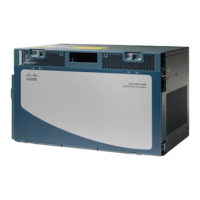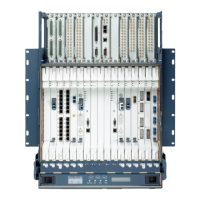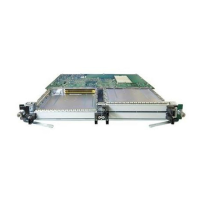2-142
Cisco ONS 15454 Troubleshooting Guide, R8.5
November 2009
Chapter 2 Alarm Troubleshooting
2.7.193 LKOUTPR-S
2.7.193 LKOUTPR-S
Default Severity: Not Alarmed (NA), Non-Service-Affecting (NSA)
SONET Logical Object: OCN
The Lockout of Protection Span condition occurs when span traffic is locked out of a protect span using
the Lockout of Protect command. This condition is visible on the network view Alarms, Conditions, and
History tabs after the lockout has occurred and accompanies the “FE-LOCKOUTOFPR-SPAN” alarm
on page 2-108. The port where the lockout originated is marked by an “L” on the network view detailed
circuit map.
Clear the LKOUTPR-S Condition
Step 1 Complete the “Clear a BLSR External Switching Command” procedure on page 2-269.
Step 2 If the condition does not clear, log into the Technical Support Website at
http://www.cisco.com/techsupport for more information or call Cisco TAC 1 800 553-2447.
2.7.194 LMP-FAIL
Default Severity:Minor (MN), Non-Service-Affecting (NSA)
SONET Logical Objects: CLIENT, CTRL, TLINK
The Link Management Protocol Fail alarm is raised by the TCC2/TCC2P card when an LMP control
channel fails or when there is a traffic engineering (TE) link correlation error. When the alarm is raised
against a control channel, it uses a control channel (CTRLx) AID. When the alarm is raised against a TE
link, a TE link AID (TLINKx) is used.
The alarm clears when the control channel or TE link is restored.
Note LMP-FAIL occurs independently of the condition hierarchy between the “LMP-SD” alarm on
page 2-143, the “LMP-SF” alarm on page 2-144, or the “LMP-UNALLOC” alarm on page 2-146.
Note When the LMP-FAIL alarm is reported against a control channel (CTRLx) AID, it only refers to control
channel failure. It does not directly indicate data link or traffic engineering link status.
Note When the LMP-FAIL alarm is reported against a TE link AID (TLINKx), it refers only to TE link status,
not to control channel or data link status.
Clear the LMP-FAIL Alarm
Step 1 Verify the AID (CTRLx or TLINKx) of the alarm.

